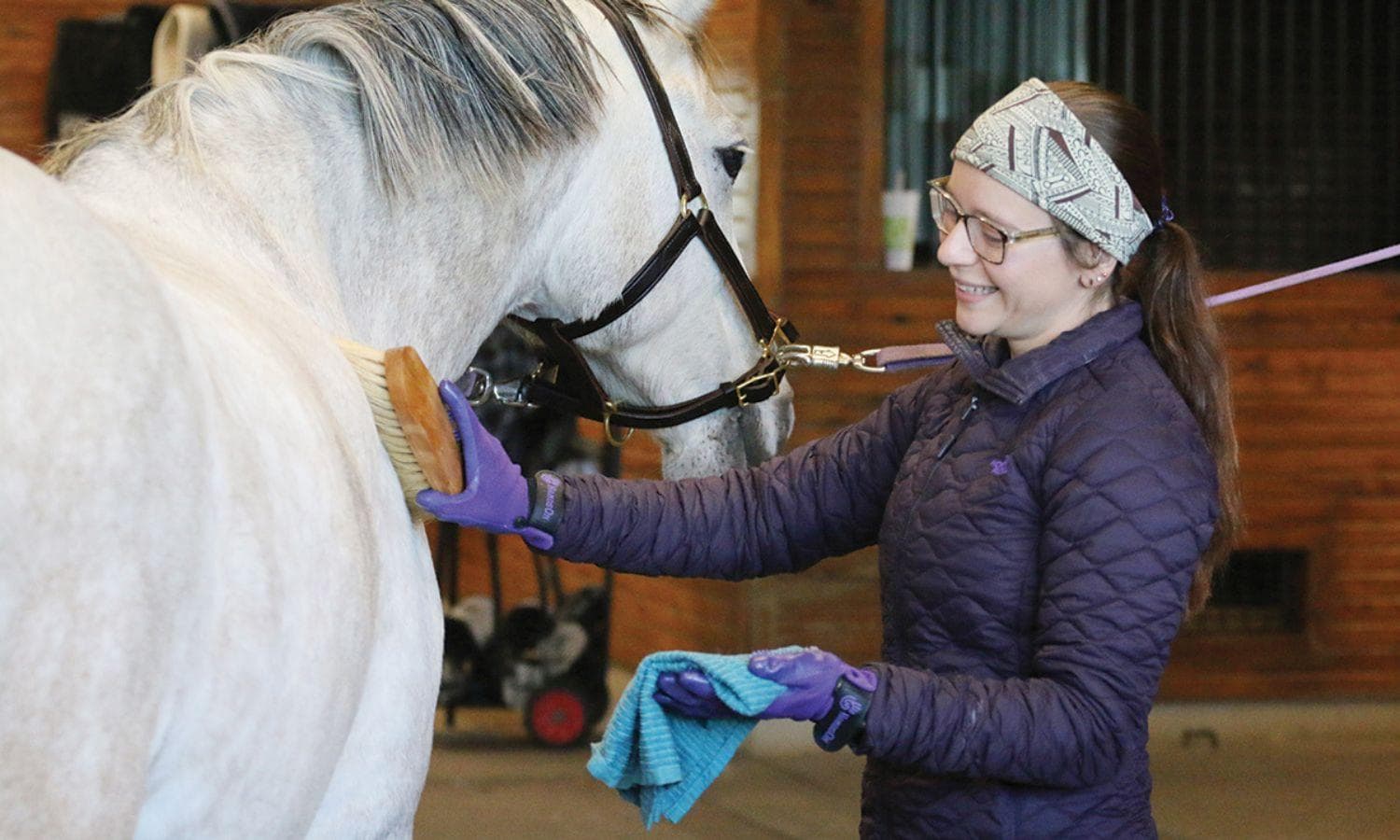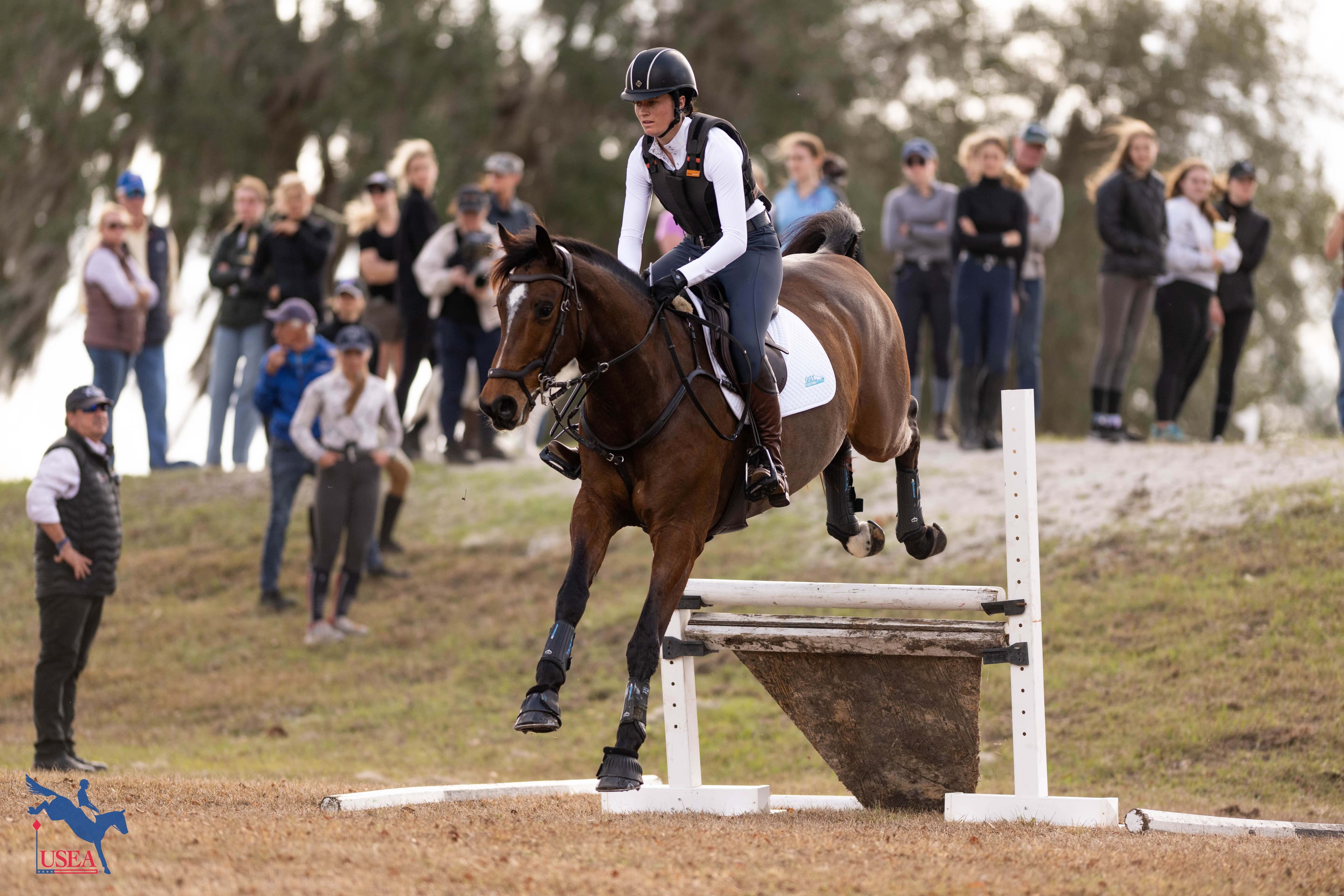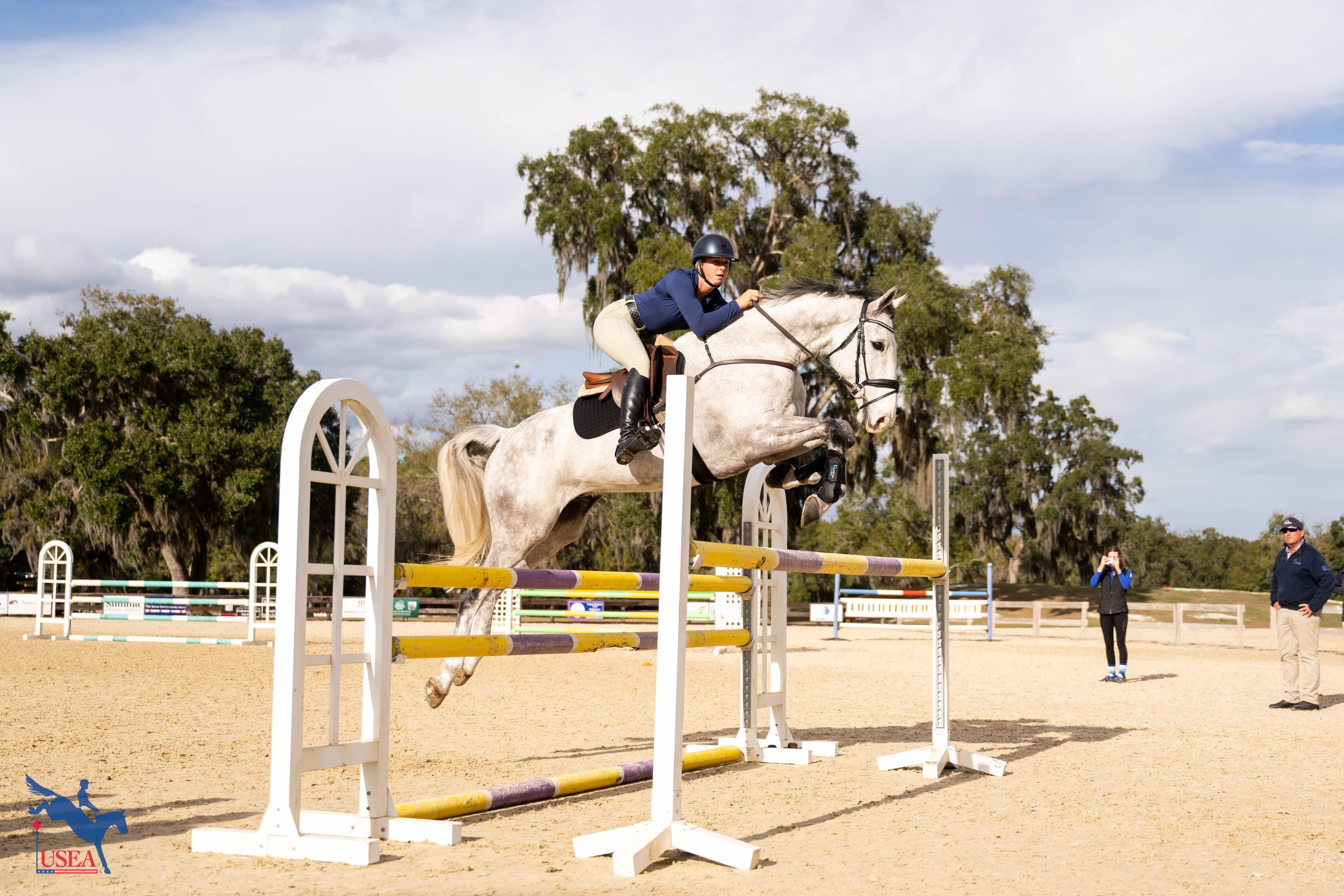From the Ground Up with Tik Maynard: Part One
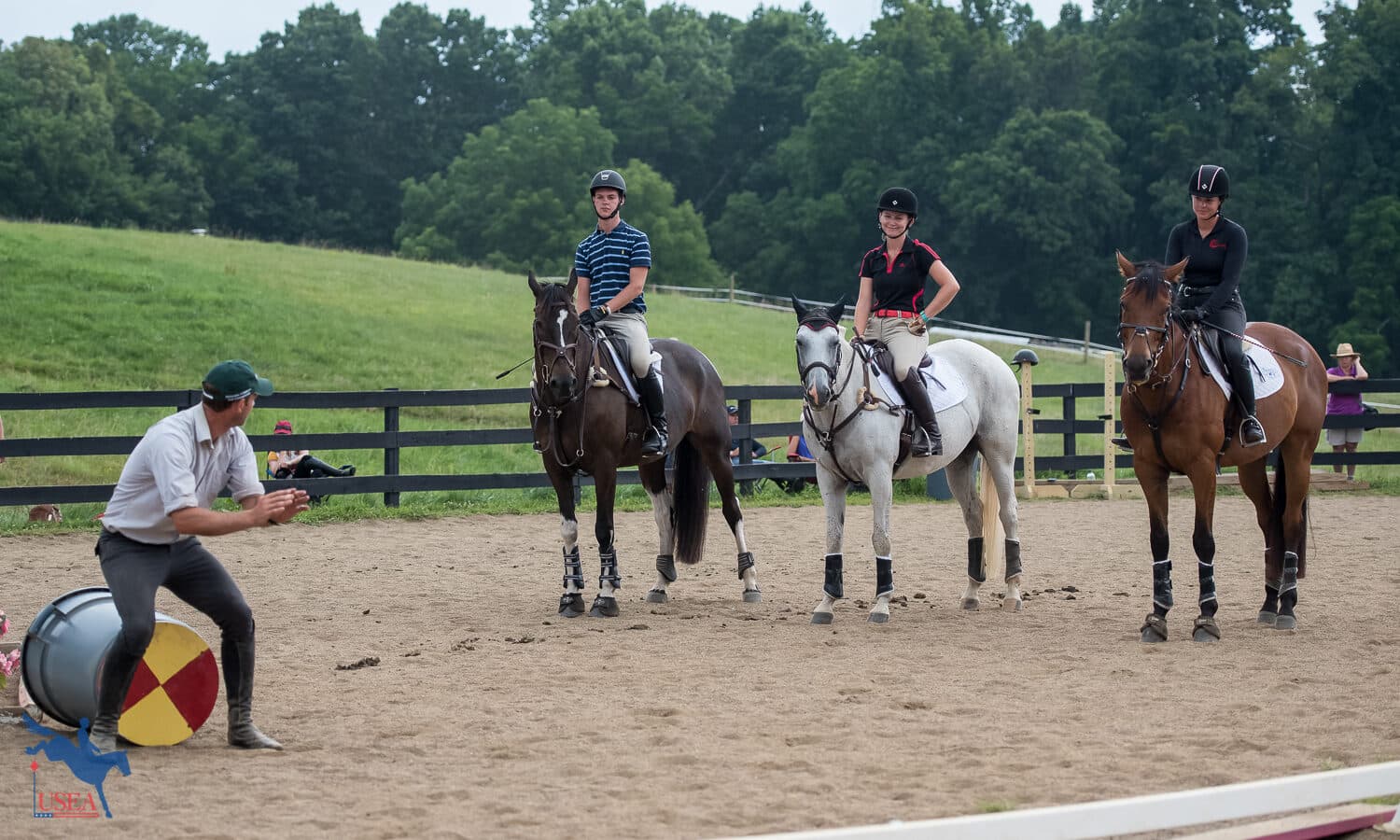
This article originally appeared in the July/August 2016 issue of Eventing USA magazine and is being republished on the USEA website in two parts. Stay tuned for part two.
Modern pentathlete turned eventer Tik Maynard has created a recipe for success in the horse training business. His methodology blends high performance with horsemanship to produce innovative training techniques focused on improving communication between horse and rider.
Through natural horsemanship – or horse psychology as he calls it – he has gained the reputation of having a magic touch with horses. Maynard developed his training ideology from carefully studying what motivates horses and how they learn. He begins progressively from the ground up maintaining empathy and respect for each equine partner along the way, aiming to constantly create an environment of success.
Maynard has carved out his own niche in the equestrian world by combining horse psychology with the competitive thrill of eventing, gaining the attention of horsemen looking for a new avenue of communication with their own horses. A group of these riders joined Maynard at Longview Farm in The Plains, Va. to gain more insight on these transformative training concepts.
The Ground Floor
Ground work is the foundation for Maynard’s training techniques. Through working with horses “on rope,” Maynard believes you can cultivate a relationship with your horse that grows deeper and extends farther than time spent in the saddle. He also sees groundwork as an opportunity for riders to better understand how their horses learn, which enables them to sharpen their riding skills.
For horses to respond to human aids, both on the ground and in the saddle, there must be a motivation. There are four main types of motivations for horses: safety, comfort, food, and curiosity. A horse’s drive to be comfortable is used most frequently for training.
Exerting pressure onto a horse, making them slightly uncomfortable, causes them to react in an effort to release the pressure. For example, when a rider squeezes their legs, this makes a horse slightly uncomfortable, so they move forward away from the pressure. When they perform this desired reaction, the rider releases the pressure which rewards the horse. “Pressure motivates and the release of pressure teaches,” Maynard repeated.
According to Maynard, horses can communicate with us by either showing tension or relaxation. He believes that through ground work riders get a visual appreciation for how their horse communicates. Alternatively in the tack, riders must learn to find what feels right which is a difficult skill to master.

On the ground horses must respect their handler’s space, so the first exercise in groundwork is asking the horse to back up. Maynard walked participants through different ways to ask their horse to back up. They could apply pressure on either side of the bridge of the horse’s nose or to the point of their shoulder until the horse reacted and moved backwards. Maynard stressed that participants shouldn’t follow the motion when the horse retreated. “Be like a nail in the fence, if they backed off it, the nail wouldn’t follow,” he clarified.
Handlers can also ask a horse to back by utilizing a rope halter, which is a training tool that sits on a horse’s facial pressure points. Grasping the lead line with their thumb pointed toward the ground, participants learned to gently pull downward to apply pressure as they slid the halter side-to-side. They also asked their horses to back by wagging the lead rope side-to-side. Maynard explained the key to this method is to start small and move bigger if necessary, starting the swing in the wrist before building up through the elbow and shoulder. Both of these methods use the knots of a rope halter to apply pressure.
No matter the method used, the timing of the release is crucial. As Maynard said, “the release of pressure teaches.” He emphasized the importance of a well-timed release to help horses understand what their handler is asking.
Since many horse and rider pairs were trying out natural horsemanship for the first time, Maynard helped each pair create a successful outcome. “If you can’t do one thing with a horse, find something else you can do,” he explained. Some horses could be asked to take many steps back, but for some taking just one step backwards was considered an achievement.
Maynard’s idea of always creating an environment where the horse can be successful is a recurring theme throughout his training, and was a major area of emphasis throughout the entire clinic.
Focus on Footwork
Maynard’s flatwork sessions continued to work from the ground up, and in this case, specifically the feet up. “The biggest thing to work on in your flatwork is not whether your horse is on the bit or not, but how well you can control its feet. Can you speed up and slow down the horse easily? Can you stop? Can you back up? Can you leg yield left and right?” he asked.
He demonstrated by having students of all levels start with a diagonal leg yield down the side of the arena. Riders first approached the fence at a 45-degree angle with a slight bend to the outside. They then asked their horses to leg yield down the length of the fence line on this angle. Maynard reminded them to focus on their horse’s legs and not so much if they were in a frame or not.
After passes of this both ways, he had riders continue with the reins in one hand, removing any reliance on their hands and forcing them to perform the exercise accurately with their seat and leg. Many riders required a reminder to turn their own upper body in the angle they expected the horse to travel. He then bumped up the difficulty by asking participants to carry on with the same exercise in trot – still with one hand on the reins.
Maynard uses this exercise and exercises like it with all of his young horses in the first stages of their training under saddle. He insists riders should “be able to control and place all four of the horse’s feet as if they are their own.” Working through situations like this also prepares the horses for the next progressive stages in training.
“With all my young horses before they go over their first jump I can halt, back up, and leg yield at least a little. They begin to understand that my leg doesn’t always mean go faster,” he said. “As a general rule, the better a horse stops, backs up, and leg yields – you can see all three of those things in the first ten seconds of watching someone ride – the better a horse does everything else.”
Positional Awareness
On day two of the clinic, Maynard’s focus remained on communication between horse and rider through proper equitation. Riders may think they’ve progressed past the need to emphasize equitation before, over and after fences, but Maynard reminded participants that form follows function.
“There are two reasons for any position. The first is to give your horse the ability to move and jump at their most athletic, and the second is so that you can communicate with your horse,” he explained.
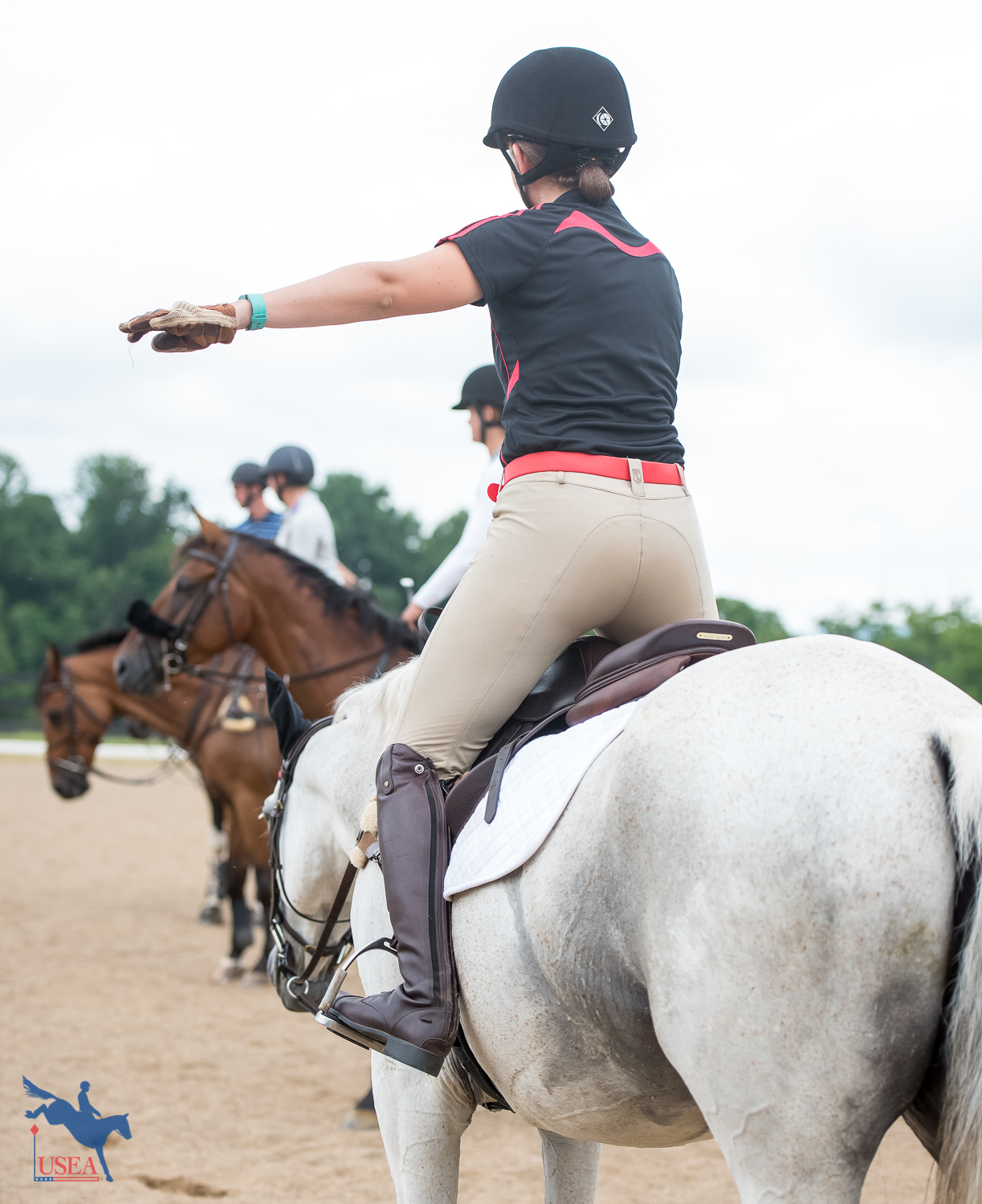
Maynard reminded riders that a solid lower leg is key to finding an ideal jumping position. To emphasize this message, Maynard had riders stand up in the saddle and hold an arm out. Standing up forced the complete weight of the rider into their heels. Over fences, Maynard explained that he likes to see an exaggerated heels down position with the rider’s toe pointing slightly out. He had riders work to keep their lower leg in the same shape when they returned to a seated position.
Once riders found security in their lower leg, Maynard asked them to get into a jumping position by tipping forward only slightly. The majority of the rider’s weight should still be in the saddle with their seat just barely out of the tack. He emphasized the body should be tipping slightly forward with your entire position, not bending at the hips. Elbows should be in front of the body and hands forward up the horse’s neck. Your quadricep muscle in your upper thigh are responsible for holding your weight and balance.
In a twist to the classic “Simon Says,” Maynard had all riders hold this jumping position around the ring as he called for them to walk, trot, canter and halt. Riders laughed as they each found weaknesses in their own two-point, but Maynard refused to let anyone take the easy way out. He quickly corrected anyone making it “too easy,” by keeping their seat too far out of the saddle or not having their heels down far enough.

To up the ante, Maynard then had riders come through a line of three small jumps set five strides apart (60 feet). He asked riders to keep this jumping position through the entire line. For a mature pair, this is a great exercise to build strength in this position.
Maynard believes this is an ideal position because this gives the horse freedom to move at its most athletic, but it also requires a lot of trust between horse and rider. Maynard tries to produce enough confidence with each of his horses, so that he can approach all jumps in this form. Sometimes if the type of jump or the horse’s confidence changes, riders must prioritize communication and shift into a defensive position. With their lower leg remaining the same, the rider sits fully in the tack and tilts slightly backwards.
Maynard had riders exaggerate these positions as he outlined the need for both. In most cases, if the pair is confident, he urged riders to find the jumping position to allow their horses to move freely, but if they are approaching a spooky fence or a large drop on cross-country, riders will want to utilize the more defensive position.
Did you enjoy this article? Want to receive Eventing USA straight to your mailbox? Members receive Eventing USA as part of their USEA Membership or you can purchase individual issues from the USEA Shop.

